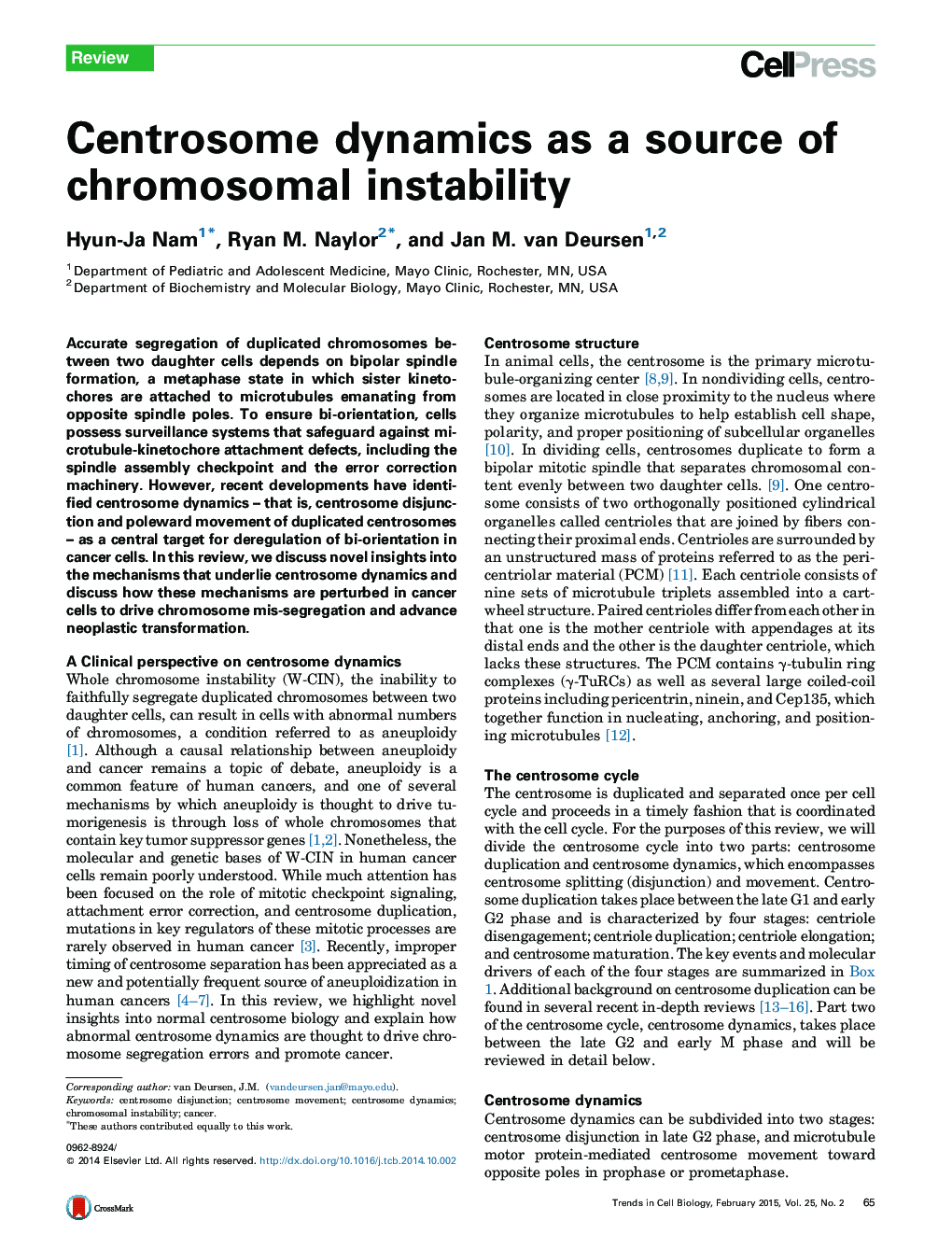| Article ID | Journal | Published Year | Pages | File Type |
|---|---|---|---|---|
| 2204448 | Trends in Cell Biology | 2015 | 9 Pages |
•The relationship between centrosome separation and chromosome mis-segregation has historically been overlooked.•Gene mutations that delay or accelerate centrosome separation cause spindle malformation, merotely, aneuploidy, and cancer.•Cyclin B2 and p53 play a central role in centrosome separation.•Centrosome separation defects may be a frequent source of chromosomal instability in human cancers.
Accurate segregation of duplicated chromosomes between two daughter cells depends on bipolar spindle formation, a metaphase state in which sister kinetochores are attached to microtubules emanating from opposite spindle poles. To ensure bi-orientation, cells possess surveillance systems that safeguard against microtubule-kinetochore attachment defects, including the spindle assembly checkpoint and the error correction machinery. However, recent developments have identified centrosome dynamics – that is, centrosome disjunction and poleward movement of duplicated centrosomes – as a central target for deregulation of bi-orientation in cancer cells. In this review, we discuss novel insights into the mechanisms that underlie centrosome dynamics and discuss how these mechanisms are perturbed in cancer cells to drive chromosome mis-segregation and advance neoplastic transformation.
